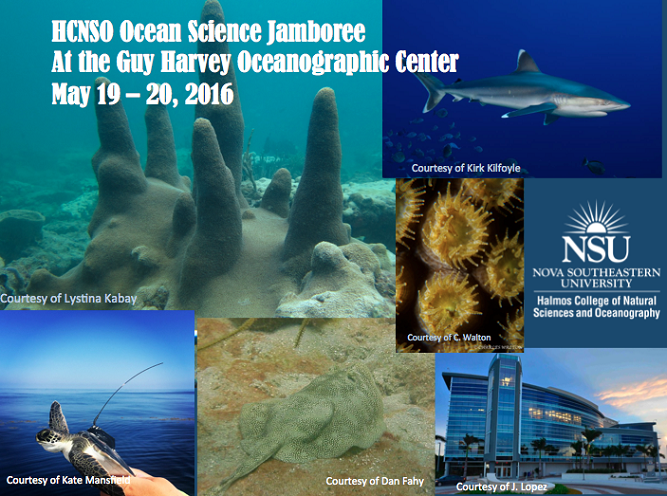Introduction to the Coral Restoration Lab and a Brief Overview of Hydrocarbon Toxicity
Location
Guy Harvey Oceanographic Center Facility
Start
5-19-2016 11:15 AM
End
5-19-2016 11:30 AM
Abstract
The Coral Restoration Lab is responsible for maintaining NSUs Land-Based Coral Nursery and the building seawater supply. Recent research conducted includes a 6 month nitrate loading experiment with 4 coral species to determine the effects associated with increased levels of nitrate. Hydrocarbon toxicity is the main focus of the Coral Restoration Lab. In order to determine the toxicity of petroleum to coral, a suite of experiments are being conducted examining the effects of individual petrogenic hydrocarbons on a representative coral species utilizing a passive dosing system. Determination of the lethal endpoint (LC50) allows calculation of a critical target lipid body burden using the Target Lipid Model, which is used to calculate the LC50 of other petroleum hydrocarbons. Petrogenic hydrocarbons are considered Type I narcotic chemicals, and the toxicity of hydrocarbon mixtures is directly related to the additive effects of constituents present and can be quantified using the Toxic Unit approach. Previous research conducted has focused on multiple oils and species, and comparisons of results are hindered due to the lack of quantifiable chemistry, differences in bioassay conditions, and length of exposure. Another suite of experiments are being planned to assess the toxicity of petroleum hydrocarbons to deep-sea micronekton. These organisms are important ecological links between economically important shallow water species and deep-water petroleum pollution.
Introduction to the Coral Restoration Lab and a Brief Overview of Hydrocarbon Toxicity
Guy Harvey Oceanographic Center Facility
The Coral Restoration Lab is responsible for maintaining NSUs Land-Based Coral Nursery and the building seawater supply. Recent research conducted includes a 6 month nitrate loading experiment with 4 coral species to determine the effects associated with increased levels of nitrate. Hydrocarbon toxicity is the main focus of the Coral Restoration Lab. In order to determine the toxicity of petroleum to coral, a suite of experiments are being conducted examining the effects of individual petrogenic hydrocarbons on a representative coral species utilizing a passive dosing system. Determination of the lethal endpoint (LC50) allows calculation of a critical target lipid body burden using the Target Lipid Model, which is used to calculate the LC50 of other petroleum hydrocarbons. Petrogenic hydrocarbons are considered Type I narcotic chemicals, and the toxicity of hydrocarbon mixtures is directly related to the additive effects of constituents present and can be quantified using the Toxic Unit approach. Previous research conducted has focused on multiple oils and species, and comparisons of results are hindered due to the lack of quantifiable chemistry, differences in bioassay conditions, and length of exposure. Another suite of experiments are being planned to assess the toxicity of petroleum hydrocarbons to deep-sea micronekton. These organisms are important ecological links between economically important shallow water species and deep-water petroleum pollution.


